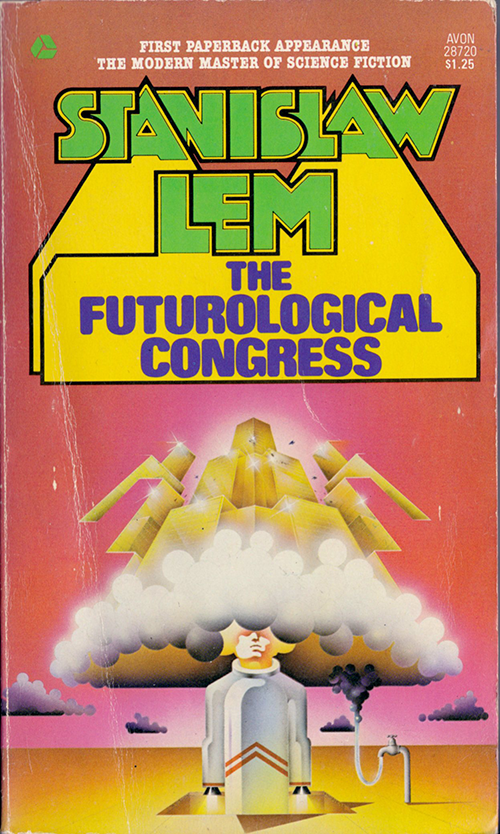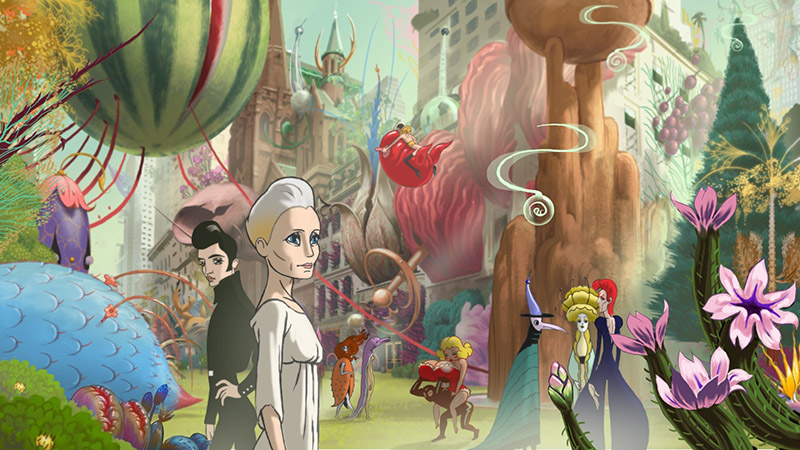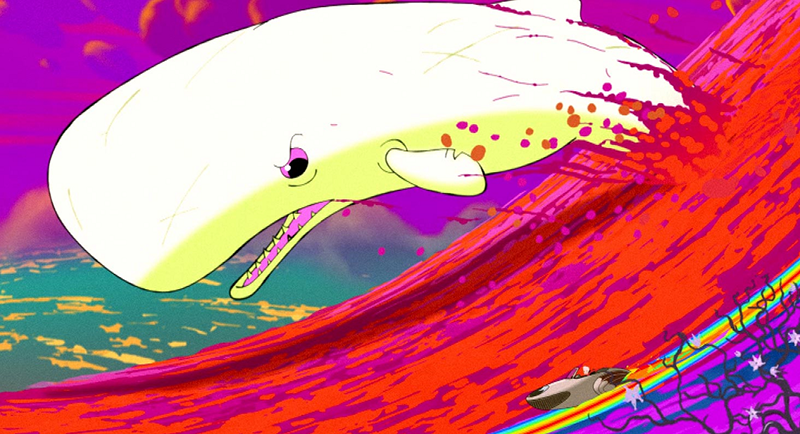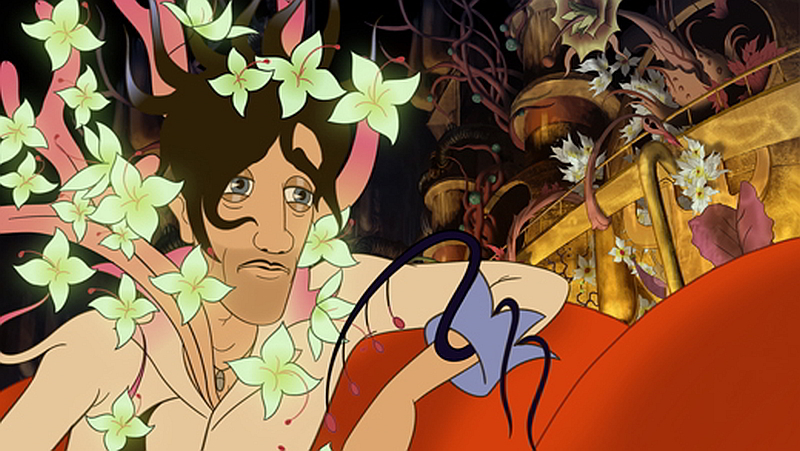When I first heard that Ari Folman had directed an IRL/animation hybrid adaptation of Stanislaw Lem’s The Futurological Congress that replaces the main role of satirical space explorer Ijon Tichy with the actor Robin Wright and cuts the title to The Congress, I was skeptical but intrigued.
Cover by Stanislaw Fernandes.
The Futurological Congress is one of my favorite books. It’s Lem out-PKDing Philip K Dick at waking-up-from-a-nightmare-into-another-nightmare psychedelic mind-fucks. Tichy attends the Futurological Congress, which is attacked by terrorists armed with weaponized hallucinogens. Trapped in a trip from which doctors can’t sober him up, they cryogenically freeze Tichy until medical science can find a cure. He wakes up in a future where pharmacologicals are aerosolized and distributed to every citizen to satisfy their every desire. Then it gets weird. What could this plot have to do with the failing acting career of fictionalized Robin Wright?
Film still from The Congress.
The movie seems to struggle with reconciling these two threads at well. The animation-less beginning, when Robin Wright is struggling with whether she should let Miramount Studios scan her body so they can use a digital version of her in movies, drags a little. But then we jump forward 20 years to contract renegotiations at the Futurist Congress (an understandable truncation of Lem’s conference title–this would be a better title for the film), which is being held in the animated zone of Abrahama City, and the movies goes all in with zany animation and high SF ideas.
Film still from The Congress.
The writer and director Ari Folman tacks on a story about love and family but otherwise, after Robin Wright attends the Futurist Congress, the plot is surprisingly faithful to Lem’s book, somehow managing to be even more bleak than the very dark and existentially scary book (I’d say more but I don’t want to spoil the finale of either the book or the film, which you should experience for yourself). I really loved the animation and all the sly references to pop culture in the characters and background. The Isreali-based animation studio, Bridgit Folman Films Gang, did a beautiful job. One thing I found interesting in comparing the real-life and cartoon versions of Robin Wright in the same movie is how the exaggerated eyes of cartoon characters work. If they had drawn Wright with eyes in the same proportion as the rest of her, she wouldn’t look as lively. People focus on each other’s eyes so much that it makes sense to enlarge them in a drawing.
Film still from The Congress.
Overall I found The Congress to be a fascinating movie. I’m glad Drafthouse Films picked it up for North American distribution. You should give it a watch (but as always the book is better).




